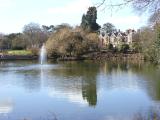
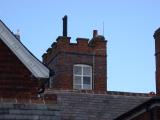
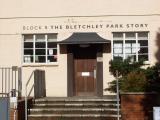
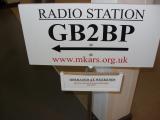
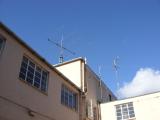
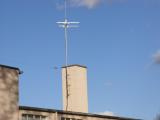
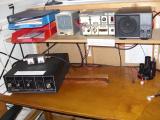
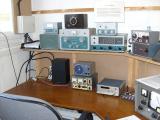
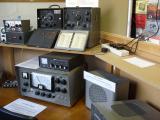
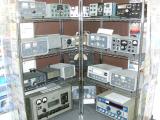
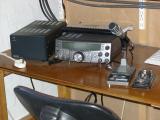
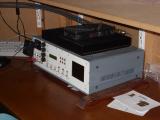
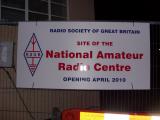
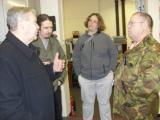
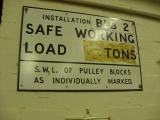
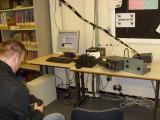
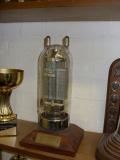
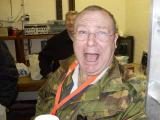
During a visit to England in March, 2010, we visited Bletchley Park. The Bletchley Park National Codes Centre is the site of Britain's World War II efforts to break the secret codes of the Axis powers. Originally a country estate chosen because of its obscurity, the site at one point was filled with huts where scientists and technicians built and operated the first programmable computers. Security at the site was exceptionally effective, and the role that Bletchley Park played in the war effort remained secret for another 30 years after the conclusion of hostilities. A group of local amateur radio operators has reactivated a radio station at the estate for the first time since Station X went off the air in 1940 in order not to attract the attention of German bombers. We were fortunate enough to get after-hours access to the station, as we were there on a night when the radio club was meeting.
These photos are copyright © 2010 Kenneth E. Harker. All rights reserved.
 |
A large pond in the center of the estate. The original manor house is on the far side of a lawn beyond the pond. |
 |
At the very beginning of the war, antennas were attached to this tower in the center of the manor house. Station X was used to receive copies of German transmissions as intercepted by other listening posts. Fearing that operating a radio station from the estate would attract the attention of the Germans, the British sound stopped operating a station on the estate proper, and relied upon couriers and other means of transporting intercepted transmissions to the code breakers. |
 |
The main museum entrance is in one of the original "Block" buildings. Aside from the manor house, the structures on theestate were either designated as "blocks" or "huts". The "blocks" were more substantial, permanent structures. |
 |
One of the exhibits on the upper floor of the museum is a functional amateur radio station, GB2BP, maintained and operated by the Milton Keynes Amateur Radio Society. |
 |
You can see some of the antennas on the roof of Block B, where the main museum exhibits and the amateur radio station are located. |
 |
Some VHF antennas, and an 80 meter dipole attached to a chimney on the Block B building. |
 |
On the weekends, MKARS volunteers would bring in a radio to plug in next to this antenna tuner. On the top shelf is an antenna rotor, a 13.8VDC power supply, and a speaker. |
 |
Another desk in the amateur radio area has more vintage equipment. Most of this gear is from the 1960s. |
 |
The device on the top shelf is a piece of test equipment (a "wavemeter") used during World War II. The radio on the desk is from the 1950s. |
 |
Is any amateur radio club station complete without the shelves full of boatanchors? |
 |
A modern rig at GB2BP. This is a Kenwood TS-2000, surrounded by a 13.8VDC power supply, a microphone, and a Morse code straight key. |
 |
A signal generator of some sort. |
 |
The Radio Society of Great Britain, the national amateur radio society, was in the process of building a new "National Amateur Radio Centre" at Bletchley Park. When we were there, the site behind Block B had been graded and it lookde like the foundation was ready to be poured. The building was not completed by the end of April. |
 |
The club meeting in the evening was actually held in an old generator building that is not open to the general public. There were a couple of dozen club members present. There didn't seem to be any real organization or meeting, per se - just a social gathering with tea and cake. |
 |
One of the original signs inside the building. The building originally housed an electric generator powered by fuel oil stored in a reservoir on the roof. |
 |
The generator house had a modest HF amateur radio station in it, which I believe was attached to a G5RV wire antenna outside. The ladder line feed line ran through the room to a bulkhead on the opposite side of the room. |
 |
An old 5C/450A vaccuum tube converted into a trophy. |
 |
William Fludgate G1YYU. |
|
Last Updated 26 June 2020 wm5r@wm5r.org |